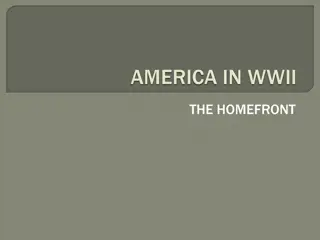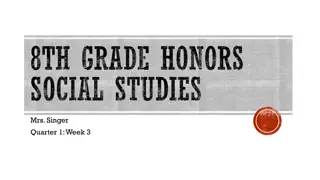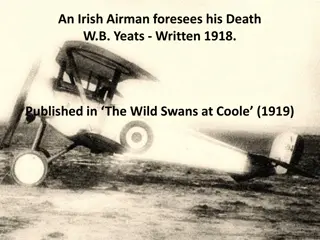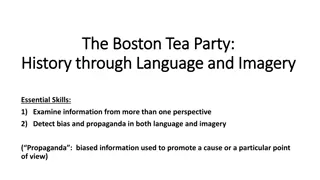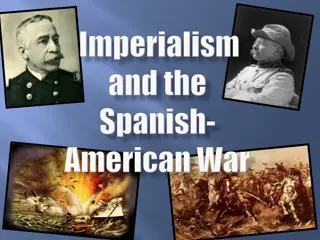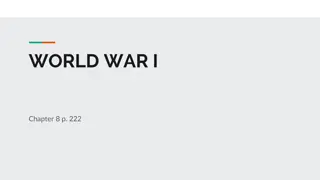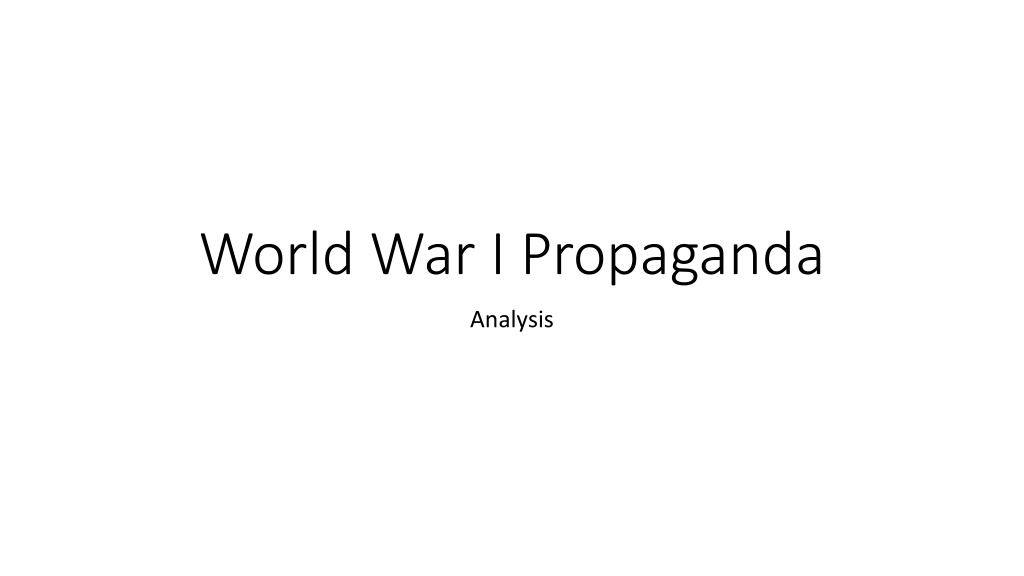
Analysis of World War I Propaganda Posters
This analysis delves into various World War I propaganda posters from different countries like Great Britain, France, the U.S., and Russia. Each poster conveys specific messages to target audiences using different propaganda tools to serve its objectives. The analysis explores the overall messages, intended audiences, propaganda tools employed, and the objectives behind each poster.
Download Presentation

Please find below an Image/Link to download the presentation.
The content on the website is provided AS IS for your information and personal use only. It may not be sold, licensed, or shared on other websites without obtaining consent from the author. If you encounter any issues during the download, it is possible that the publisher has removed the file from their server.
You are allowed to download the files provided on this website for personal or commercial use, subject to the condition that they are used lawfully. All files are the property of their respective owners.
The content on the website is provided AS IS for your information and personal use only. It may not be sold, licensed, or shared on other websites without obtaining consent from the author.
E N D
Presentation Transcript
World War I Propaganda Analysis
The Assignment For each of the propaganda posters, identify and explain the following on your poster chart: What is the overall message of the cartoon? Who is the intended audience? What propaganda tool is used? (don t just list, but explain how it s used) What is the objective of the poster? (don t just list, but explain how it s used)
#1 (Great Britain) The German Army committed numerous atrocities against the civilian population of Belgium during its invasion and conquest of the country in August-September 1914. The British (and by extension the New Zealand) press seized upon these atrocities and presented them to their readers as evidence of German barbarism .
#2 (Great Britain) Propaganda tended to depict women as guardians of the home, their gentle nature and vulnerability making them both objects of men s affections and victims of the enemy s barbarous acts, and yet also as resilient, active participants in the war effort. Women served as reminders of the necessity of the fight and of the companionship that awaited soldiers upon their return. The idealized family home symbolized stability, safety and peace.
#3 (France) "They shall not pass" was a slogan used to express determination to defend a position against an enemy. It was most famously used during the Battle of Verdun in 1916 by French General Robert Nivelle. At Verdun, French forces repulsed a major German offensive. It was one of the longest, bloodiest, and most-ferocious battles of the war.
#4 (U.S.) While England and France were depicted as civilization, Germany was shown as a mad brute here, a giant, drooling gorilla wielding the club of German kultur (culture) and carrying the limp, half-naked body of a woman. As a result of propaganda like this, German Americans many of whose ancestors had lived in America for centuries faced persecution during the war.
#5 (Russia) The provisional government in place in Russia, which controlled the country following the abdication of Tsar Nicholas II and prior to the ascendance of the Bolsheviks in 1917, established all-female combat units in an attempt to inspire war-weary male soldiers and demonstrate the Bolshevik model of equality among citizens. Postcards featuring members of the women's battalions were paired with moralizing captions celebrating qualities such as bravery, unity, and good hygiene.
#6 (Germany) On the German side, Fritz Erler designed Help Us Win! Buy War Bonds (1917) after making studies of soldiers at the front. The man depicted in his poster wears a type of steel helmet introduced by the German army in 1916. The gas mask on his chest, the two "potato- masher" grenades in a pouch dangling from his left shoulder, and the barbed wire that surrounds him are all visual hallmarks of World War I. The artist formed the soldier's pupils into small crosses, harnessing Christian symbolism to cast him as a noble and timeless figure.

